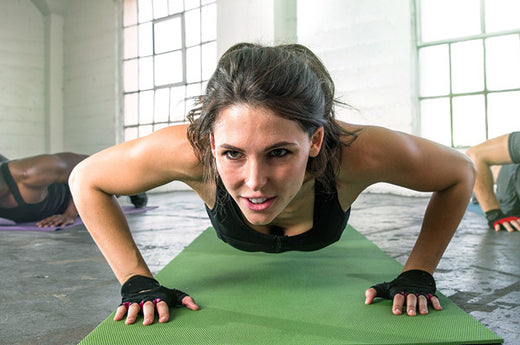EXERCISE FOR CORE STABILITY

What is the Core?
The “core” consists of a group of muscles including abdominal, hip and back muscles that stabilize the spine, pelvis and shoulder. The core provides a solid foundation for movement in the extremities. Core conditioning exercise programs need to target all these muscle groups to be effective. The muscles of the core make it possible to stand upright and move on two feet. These muscles help control movements, transfer energy, shift body weight and move in any direction. A strong core distributes the stresses of weight-bearing and protects the back.
Core Strength and Back Pain
Getting Started
Abdominal Bracing
Abdominal bracing is a helpful exercise to learn how to maintain mild abdominal contraction in order to support the lumbar spine. To correctly brace, you should attempt to contract your abdominal muscles. Be careful not to hold your breath – you should be able to breathe evenly while bracing. Lay on your back with your spine in a neutral position. (neutral means maintaining the natural curve in your spine) Keeping this position, concentrate on contracting your abdominal musculature without “drawing in”.
*Important: this involves hardening or tightening the muscles, not hollowing the abdominal area.
Hold this position for 5-10 seconds. Repeat 3-5 times; perform 1-3 sets.
Once mastered, this technique can be used to enhance all core stability exercises and during daily activities such as lifting . Maintaining this position will help you get the most out of all your core stability exercises and protect your spine.
Exercise Moves
Building a strong core means doing exercises regularly that target the abdominal, hip and back muscles. Here are four exercises that help keep core muscles strong.
Arm/Leg Raise
Starting position: Lie on your back with knees bent, feet flat on the floor and arms raised straight up in front of you. Maintain an abdominal brace (by tightening your stomach and buttock muscles).
The move: Lift one knee up toward 90 degrees and extend the opposite arm over your head to the floor. Hold for 2-3 seconds. Return to the starting position and switch sides.
Repetitions: Repeat 6-8 times. Gradually work up to 3 sets. Rest for 30-60 seconds between sets.


Arm Extension
Starting position: Kneel down onto your hands and knees. Keep your spine in a neutral position and maintain an abdominal brace (by tightening stomach and buttock muscles).
The move: Extend one arm out in front as much as you can – even a little way makes a difference. The goal is to make your arm parallel with the floor. Be sure to keep the rest of your body stable. Hold for 2-3 seconds. Return to starting position and switch sides.
Repetitions: Repeat 6-8 times. Gradually work up to 3 sets. Rest for 30-60 seconds between sets.


Leg Extension
Starting position: Kneel down onto your hands and knees. Keep your spine in a neutral position and maintain an abdominal brace (by tightening stomach and buttock muscles).
The move: Extend one leg behind as much as you can – even a little way makes a difference. Be sure to keep your upper body stable. Hold for 2-3 seconds. Return to starting position and switch sides.
Repetitions: Repeat 6-8 times. Gradually work up to 3 sets. Rest for 30-60 seconds between sets.


Cross Crawl


If you feel pain or discomfort while performing any of these exercises, or within 72 hours of exercising, please cease performing these exercises and consult your doctor.
This content was originally published by the Ontario Chiropractic Association. view the original article here: http://activemuskoka.com/blog/2016/10/28/core-stability
 - FREE SHIPPING ON ORDERS $50+
- FREE SHIPPING ON ORDERS $50+

 - FREE SHIPPING ON ORDERS $40+
- FREE SHIPPING ON ORDERS $40+




